Part I: How it all began…
I was sitting at the end of a long runway on a secluded military base, preparing for what would soon be the wildest ride of my life. Going to the edge of space was an opportunity I could have never dreamed of experiencing, yet in just a few moments, I would be embarking on a U-2 spy plane for a photoshoot at the Earth’s horizon. But first, let’s talk about how it all began…
Several years ago, I was privileged to fly with the USAF Thunderbirds—a wild ruckus of a flight where we did everything from barrel rolls to pulling 9.4 G’s. At one point, the pilot came over the radio, described one of the maneuvers they do near the show’s end, and asked if I wanted to try it. Before I could even say “yes,” we were rocketing upwards while aileron-rolling, the Earth spinning behind us as we screamed away from it. As cinematically captivating as the moment was, I could hardly process what was happening; being the furthest from Earth I’d ever been was beyond comprehension. This moment, however, planted a seed in me to keep the wonder alive.
A little while after the photoshoot and video from the Thunderbirds flight had hit the media, I received a phone call from a good friend and a former pilot of the 425th Fighter Squadron, of which I was an honorary commander. I told him about the experience and how the atmosphere seemed to be thinning out; although, in the grand scheme of things, it wasn’t all that significant. He joked with me and said something like, “50,000 feet is higher than a jetliner, but you know there’s a plane that goes even higher?”… Enter the U-2.

The U-2 Dragon Lady is a spy plane that was a product of the early ’50s (and even had people working on the project who were born in the 1800s… think about that for a sec). The plane was developed to fly above 70,000 feet, and with its ability to reach such high elevation, it could take pictures of cities and bases further away than any regular plane due to line of sight. It doesn’t carry any weapons, only cameras and sensors—a mark of pride for those who fly it. The specs and details of the U-2 are mind-blowing and even terrifying in some ways. However, the thing I didn’t know was that it was still flying. This immediately brought the question I couldn’t help but ask: “Is there one with two seats?”
Reading this, you already know the answer.
A few months later, I was visiting a friend at the Pentagon, and the conversation came up again about the U-2. The plane was incredibly fascinating in its capabilities, and I became determined to see it when the conversation turned to the visuals. Imagine an airplane with the wingspan of a commercial jetliner and the same powerful engine of the B-2 Stealth Bomber—designed to take one (or, in my case, two) people to the edge of space. At this point, I’d started talking with Beale Air Force Base in Northern California about visiting and photographing the U-2.
The phone call I had with the base was serendipitous, as the person I was talking with had seen the Thunderbirds video from a few months prior and was excited to set something up. She told me she could arrange for a pilot to gear up in a spacesuit for a photoshoot, and then asked if I wanted to photograph the SR-71 Blackbird while I was there. Now, for those who don’t know what the SR-71 is, please take a moment to Google it; I’ll wait.
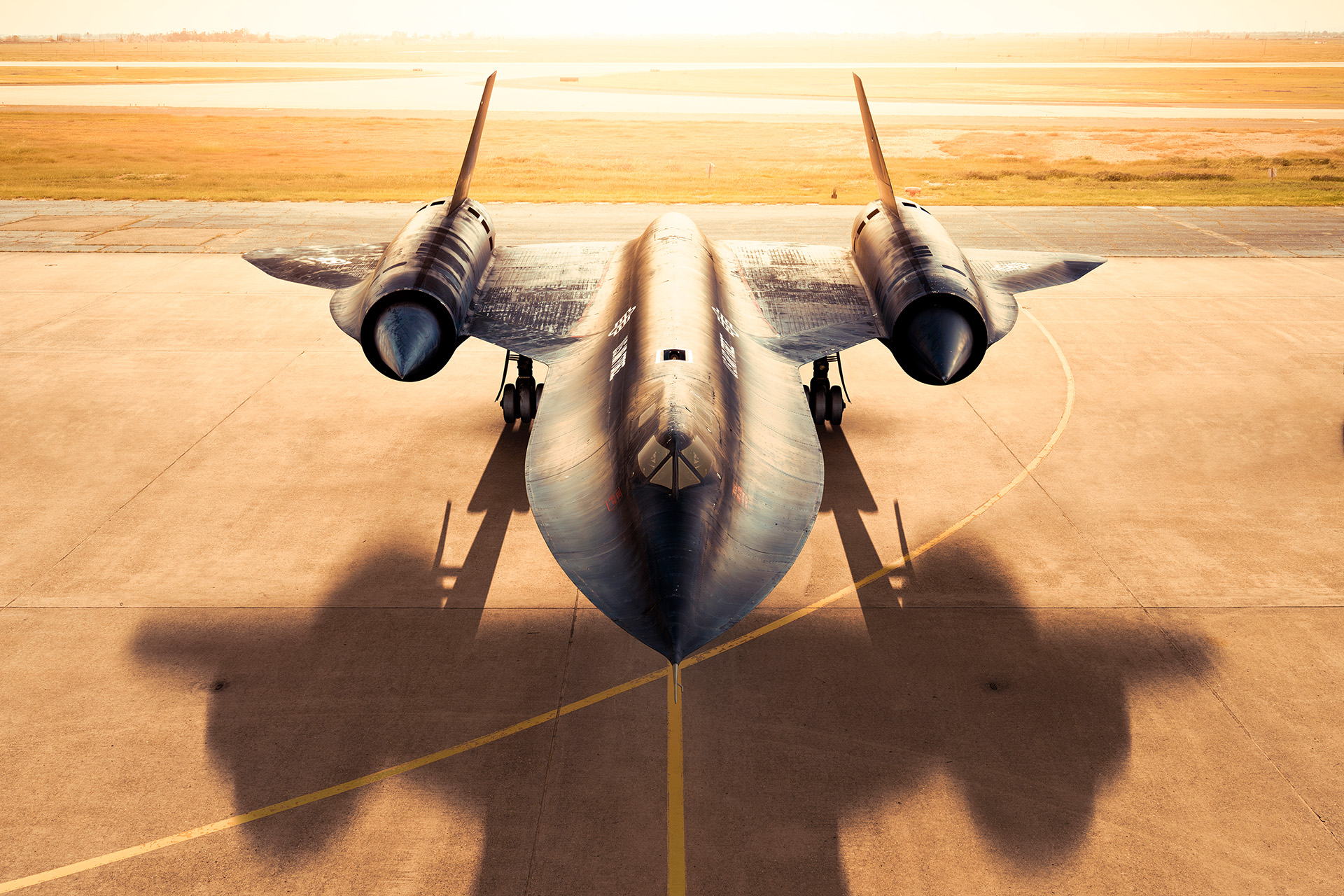
Like the U-2, the SR-71 was a spy plane and is still one of (if not the most) beautiful planes ever made. It was also one of the fastest planes to be flown and reached speed and altitude so extreme that it grew over a foot in size during flight. However, due to the amount of cost to fly, it was eventually retired. Being that Beale AFB was also its home base, I was able to photograph one they had on site. It was easy to make it look beautiful as the form-following-function aspect was very dynamic in any light. I released the images I created of the SR, but we held off on showing the U-2 pieces as that trip also began conversations about gauging my interest in flying in it.
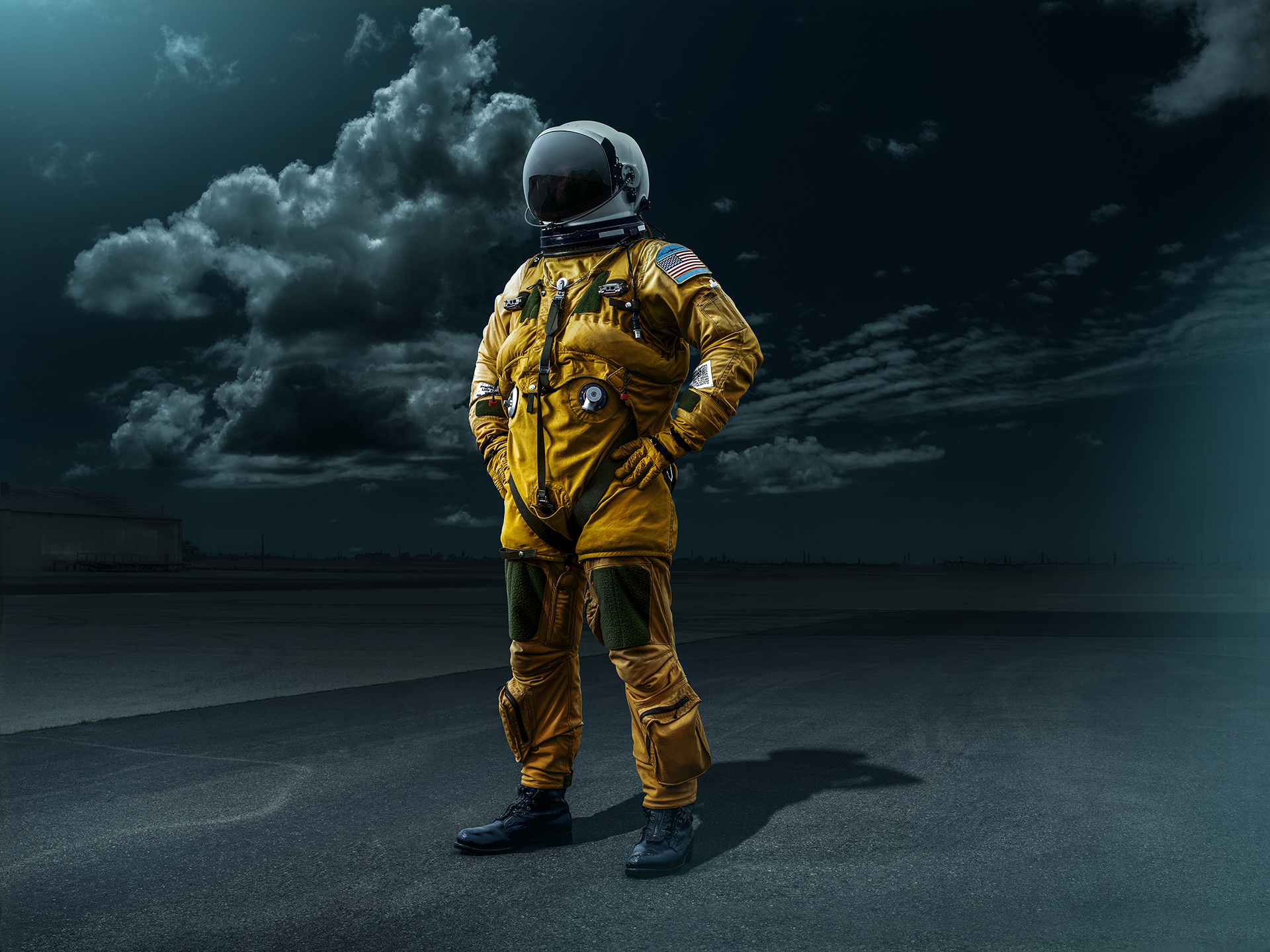
Talking about doing a high-altitude flight in a U-2 is akin to a dog chasing a car. The idea sounds incredible, but the concept of what to do when it comes to fruition is so far removed from comprehension that it is easier to have never chased it. Either way, I stayed in conversation with the base for months. Unfortunately, around this time, an incident resulted in the loss of a U-2 and one of the brave pilots flying it. It was a sobering reminder of the risks that the men and women who fly this platform take on every time they step into the cockpit. We decided it best to cancel the project out of respect for the base, as I didn’t feel it appropriate to take up their time while they were handling such a paramount loss.
For many years, the series that I had done of the U-2 plane and the pilot existed only on my phone, as for some reason, I’d never released them. Occasionally, I had texted them to friends but hadn’t posted them publicly. One day I received a message from a pilot at Beale Air Force Base saying that he had seen them and wanted to know if there were any more. We quickly established a rapport over an hour-long phone call, and not long after that, he introduced me to the new public affairs person for Beale and asked about getting me back out to the base. A flight in the U-2 was brought back to the table in one of the conversations. At this point, six years had passed, and in that span of time I’d become a father. While I loved the idea of what it would be like to see the curvature of the Earth and the blackness of space, there was a more cautious side of me that was incredibly terrified by it all.
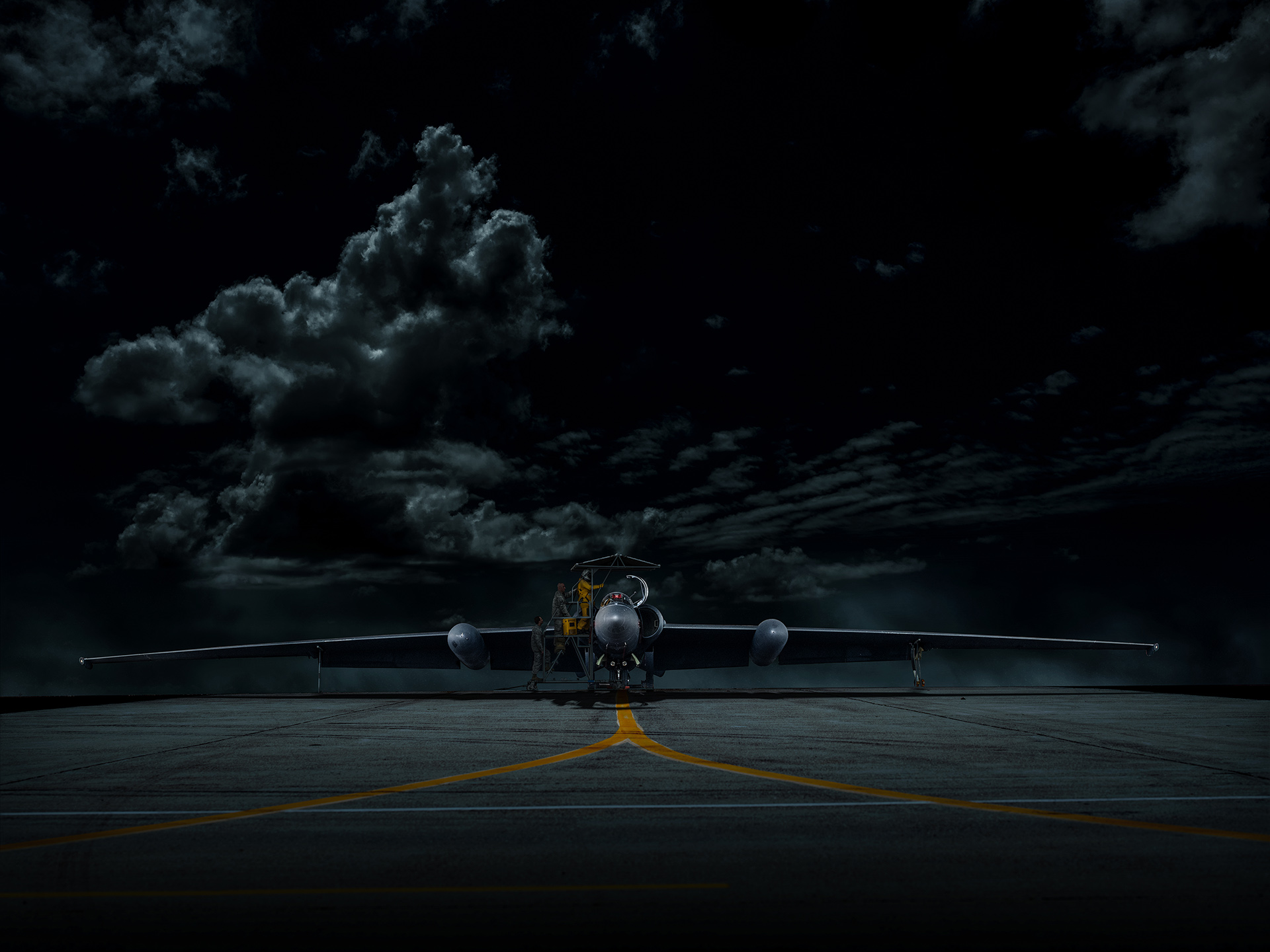
As time progressed, more conversations and paperwork were done with the base and DC. I was on the set of a photoshoot when I got a text message that said, “High flight has been green-lit.” I told no one I was with about this, as I mentally could not process it and wanted to continue focusing on the athletes I was photographing. That evening, I was having dinner with my parents and told them I had just been cleared to do a photoshoot at the edge of space. I wasn’t overly excited or emotional; rather, I was stunned and in disbelief. I didn’t know what to think or who I could even tell. Just hearing myself say it to my parents had me realizing this was a situation that was unbelievable to most.
The next day, I met with the public affairs representative at a coffee shop to form an idea of the scope of the project. I was immediately aware of the ramifications if I signed off on committing to it. It meant that I would need to take off the better part of a year to prepare for the photoshoot, both mentally and physically. I also knew it meant that immediate communications with camera companies would have to take place as we learned more about what the pressure at high altitudes could do to the cameras. In many ways, my life came to a standstill the moment that meeting ended.
In the coming weeks, I was invited to the base to meet with the many men and women involved in the U-2 program. From squadron and base commanders to plane mechanics and the pilots that fly them, I spent four days taking in as much as possible, hoping to show the world how special Beale was. My spacesuit fitting was scheduled for the final day of the trip. The weeks prior, I had to do a ton of measurements from how tall I was, down to the circumference of each knuckle on my hand. Spacesuits are not one-size-fits-all by any means. While the three days prior had been enlightening and exciting, I had yet to take in what I was getting into. That all ended the moment I put on my spacesuit and secured my helmet. I had taken my best friend with me for the trip as he would be a producer for this project, and I can still remember looking over at him and seeing tears in his eyes the moment they put my visor down. The situation had gotten very serious, and I immediately knew the responsibility resting on my shoulders.
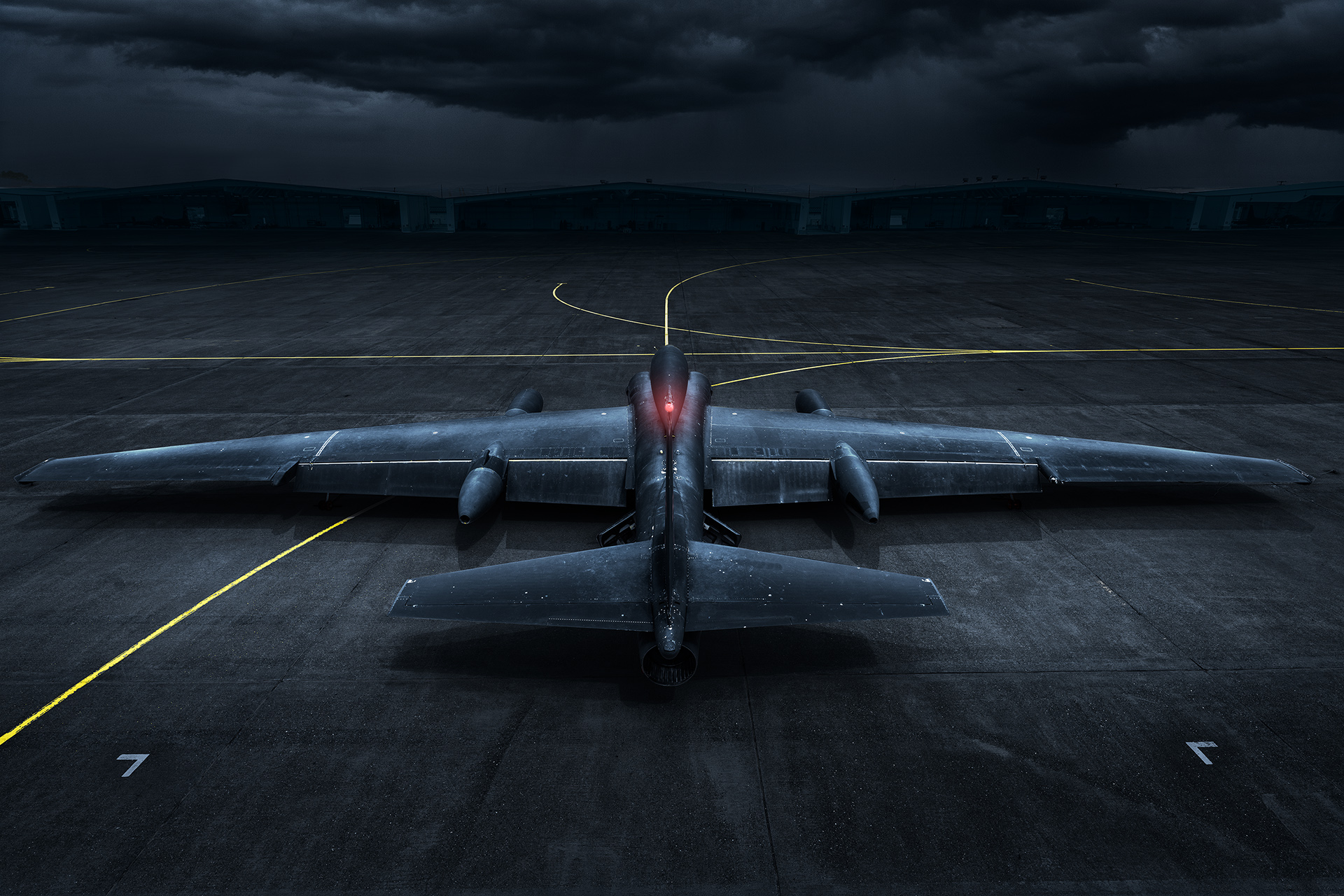
My time at the base served to teach me about the plane and help me find the angles that it would photograph well. However, I left feeling incredibly intimidated by it all—especially the spacesuit. Many people might think a spacesuit is quiet and comfortable; it is anything but. It’s extremely noisy as you can hear each in-and-out breath, and you have to learn how to listen and communicate between them because inhaling and exhaling can cause you not to hear the headphones. At this point, I also began having significant problems sleeping, as I would wake up at three or four AM every night from a dream of the flight in the suit. Very rarely does a photoshoot work its way into my subconscious, but this one did.
The coming months presented many challenges and constant tweaking to figure out the most efficient way to do the shoot. Beyond being a bit nerve-wracking, the spacesuit was tailored so that if a rapid decompression happened, the pilot’s arms would stay down so that they could eject from the plane. This made it difficult to photograph, as the suit fights you when trying to raise your arms with a camera. On top of this, I would have to rely on a liquid-crystal display (LCD) screen as the fishbowl on my head made it impossible to use the regular viewfinder. These were only some of the considerations I had to think about daily. I knew I would need all my mental faculties to get the shot, so to fully capitalize on them, I quit drinking and started working out with a trainer three times a week. I’d continue this for the next six months so that my shoulders would be strong enough to combat the suit. One final thing I took on was daily meditation, suggested by one of the pilots for mental focus beyond the noise of the suit.
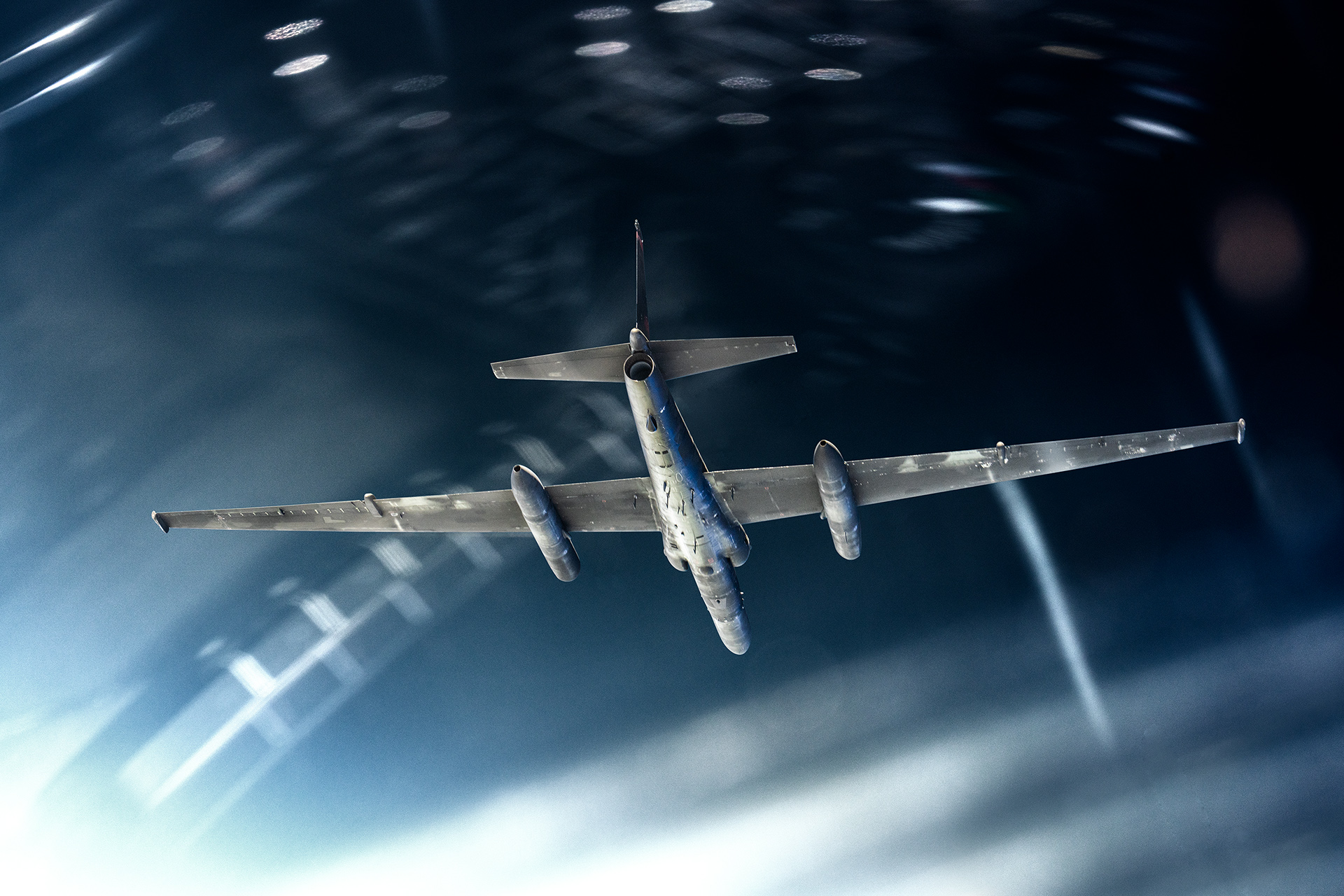
Over the coming months, I tested almost 300 camera and lens combinations for the flight. We knew that the size of the camera (or cameras) that joined me on this journey was equally important to its capabilities. My life began to revolve around this project; it worked its way into my daily conversations and even distracted me at random times throughout the day. At this point, I’d received a phone call about the project to gauge my interest and willingness to not only go up to the edge of space, but to try and do the very first plane-to-plane photoshoot while up there. We would launch two U-2s, one with me and my pilot and a second plane with a single seat. Once we both reached high altitude, we would rendezvous and get the aircraft as close as we safely could to create images of the plane as it entered the darkness with ice beginning to form on its surface. Truth be told, I was not on board with this idea for quite some time. Not only did it present more challenges in my mental approach, but it would also require a second set-up of camera gear to get the shot. However, as time passed, I felt I had enough practice to incorporate this aspect of the photoshoot.
Over the next six months, I took in all the information I could get from knowledgeable sources. One friend of mine was the captain of the Space Shuttle Endeavor, and he and I would talk every week about what kind of approach to take with trying to do this photoshoot. He gave me advice on everything from creating a good workflow schedule in the cockpit to preparing for muscle memory function by wearing ski gloves and a motorcycle helmet while adjusting the camera.
I was becoming more and more confident in all the pre-production behind the shoot, and finally, I received a phone call from the base that said my mission was confirmed: the flight would take place on April 14th at 11 AM.
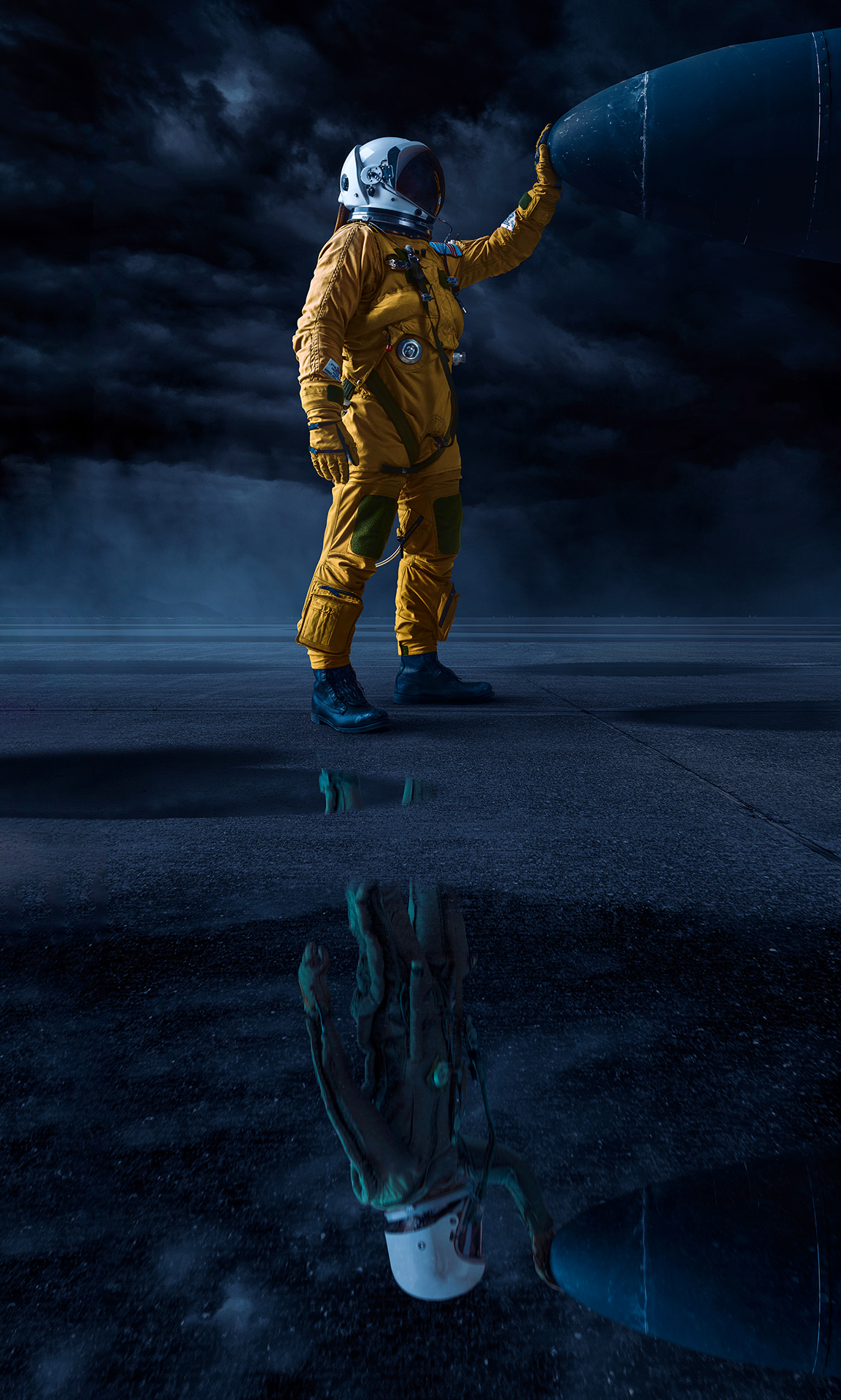

Great story.
Outstanding images and technique. Such a treat to view a master and his craft.